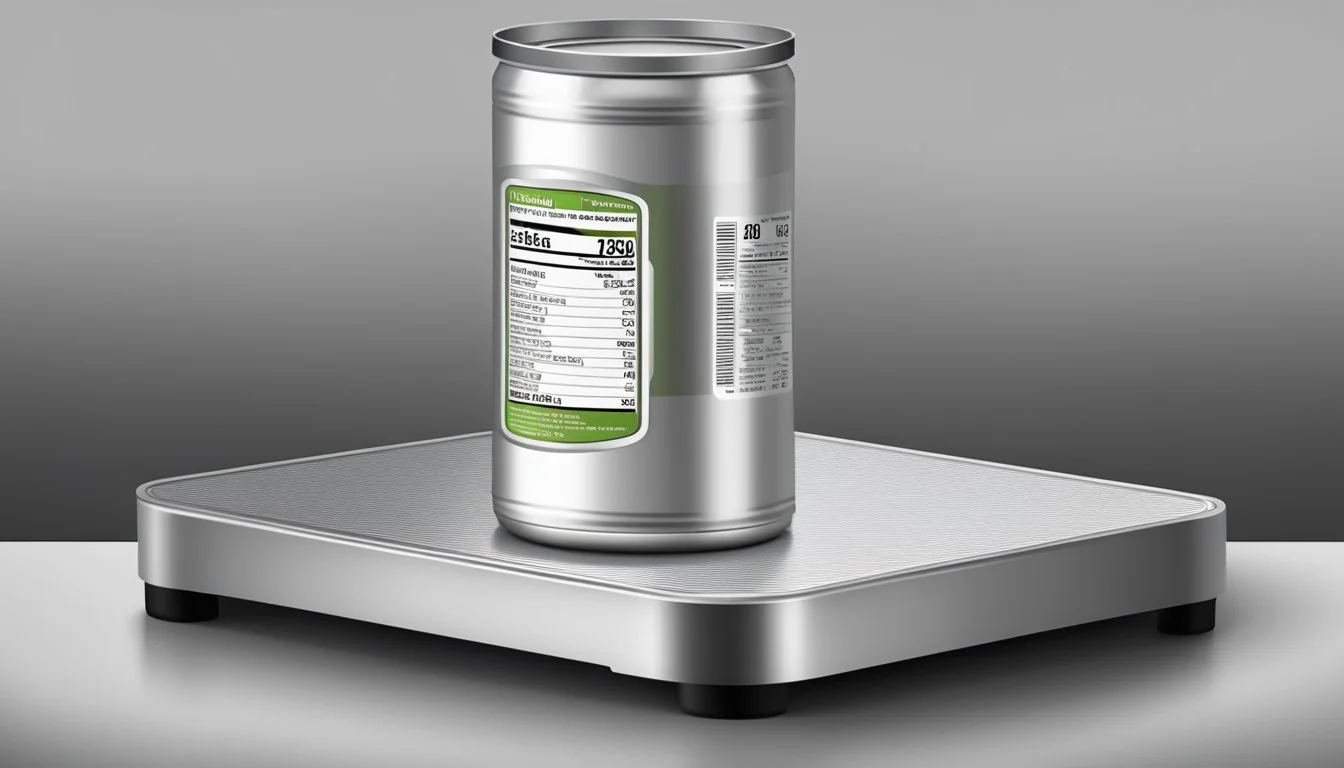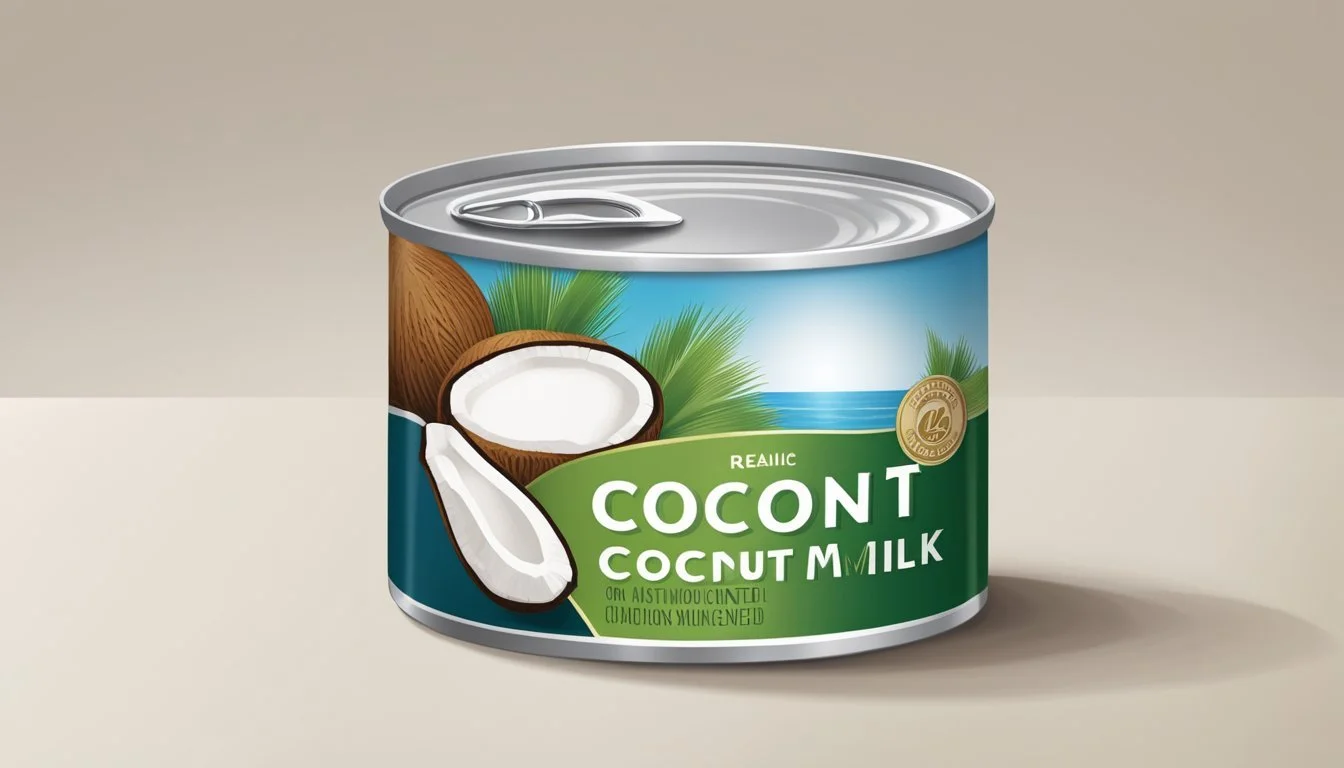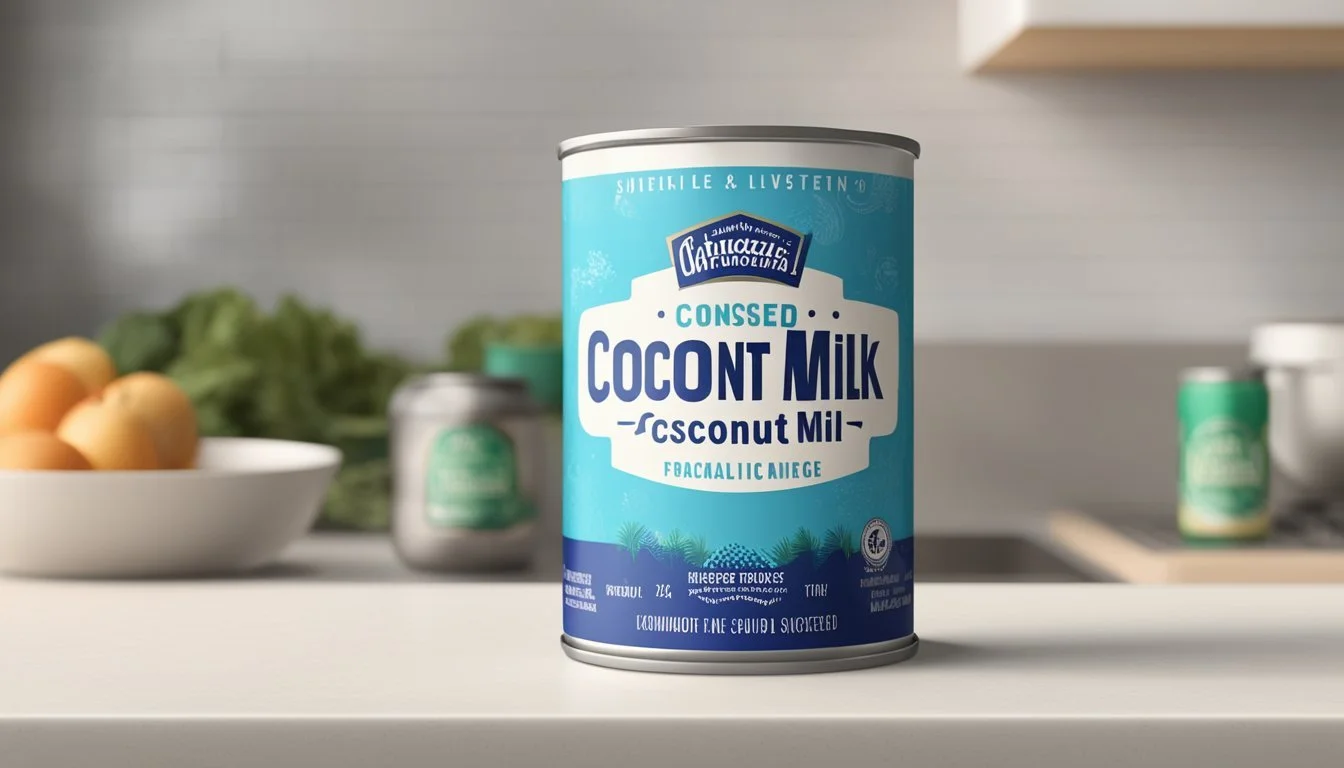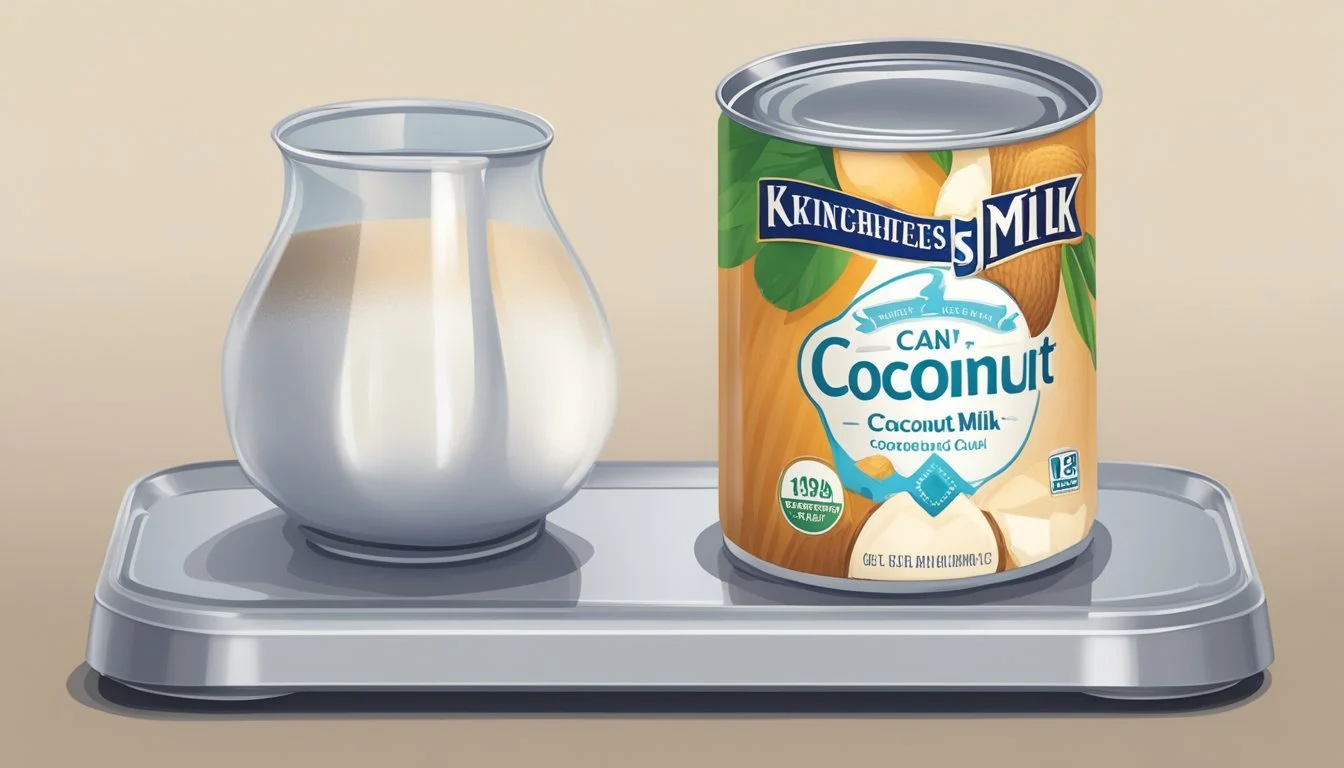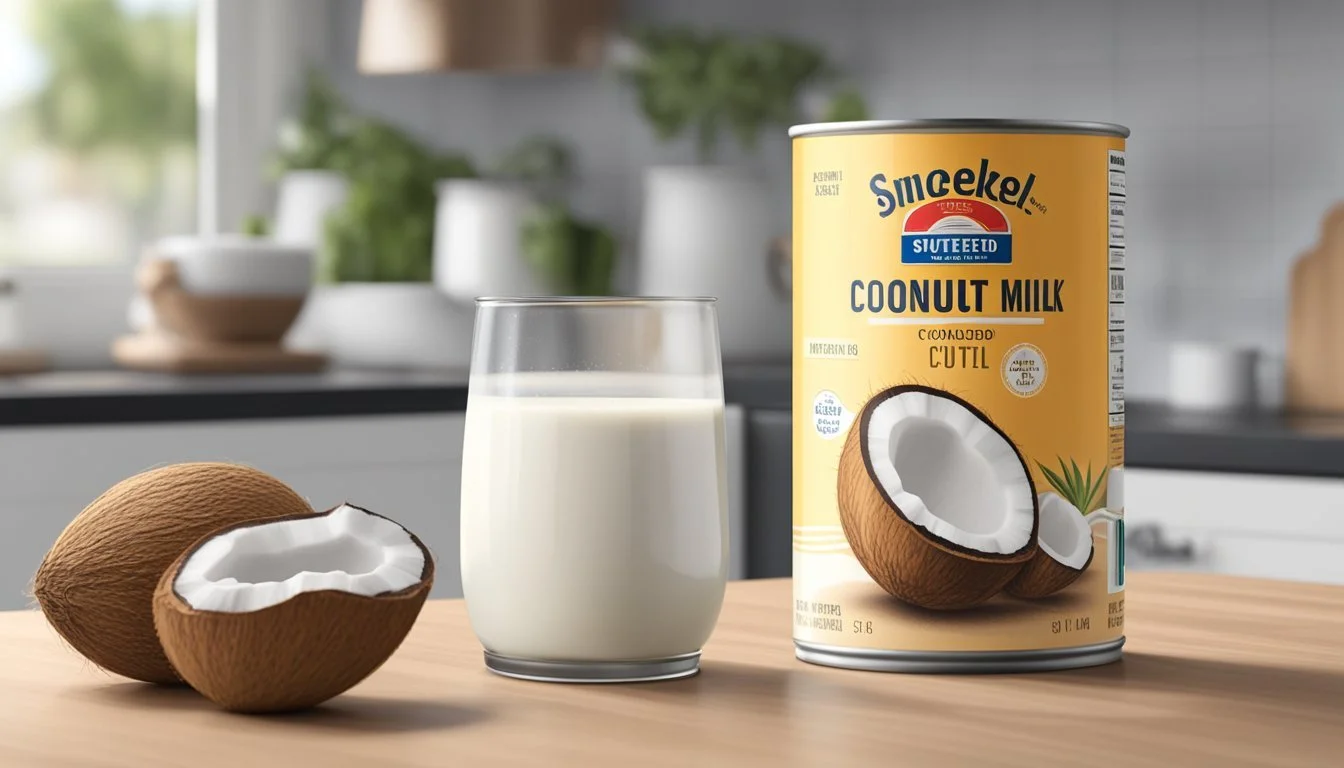How Many Ounces in a Can of Sweetened Condensed Coconut Milk
Capacity Explored
Sweetened condensed coconut milk is a dairy-free alternative to traditional sweetened condensed milk, used in a variety of desserts and beverages. It carries the rich taste and creamy texture of regular condensed milk with a coconut twist, making it suitable for those with dairy intolerances or for anyone looking to infuse a tropical coconut flavor into their dishes. When it comes to measuring this ingredient for recipes, understanding the quantity contained in a single can is key to ensuring the success of your culinary endeavors.
Standard cans of sweetened condensed milk, including the coconut milk variant, typically contain 14 ounces. This measurement is quite common as it aligns with the traditional sizing found in numerous recipes, offering a convenient amount for home bakers and cook to work with.
Knowing the exact content of a can of sweetened condensed coconut milk is particularly useful for those looking to substitute traditional sweetened condensed milk with a non-dairy alternative. Using the correct amount ensures that the dessert or drink maintains its intended texture and sweetness. Additionally, for individuals looking to produce their own sweetened condensed coconut milk at home, recipes usually yield approximately 12 to 14 ounces, consistent with the can size found on store shelves.
Product Overview
This section provides a detailed insight into sweetened condensed coconut milk, focusing on its composition and how it compares to traditional dairy-based condensed milk.
What Is Sweetened Condensed Coconut Milk?
Sweetened condensed coconut milk is a dairy-free alternative to traditional condensed milk, made primarily from coconut milk and a sweetener. Ingredients typically include coconut cream and some form of sugar, often resulting in a rich, creamy texture that mimics the mouthfeel of dairy-based condensed milk. As expected of a condensed milk substitute, it retains a notable degree of sweetness and creaminess necessary for various culinary applications.
Comparing Dairy and Dairy-Free Condensed Milk
When comparing dairy and dairy-free condensed milk, several aspects are worthy of consideration:
Ingredients: Dairy-based condensed milk is made from cow's milk and sugar, whereas the dairy-free variant utilizes coconut milk.
Flavor: While both share a similar sweetness, dairy-free condensed milk has the distinct, tropical taste of coconut.
Texture: Dairy-free condensed milk typically comes close to the thick consistency of its dairy counterpart.
Vegan-friendly: Dairy-free condensed milk is a vegan option as it contains no animal-derived ingredients.
Use: In recipes, dairy-free alternatives can often be used in place of dairy condensed milk, though the subtle coconut flavor will influence the final taste of the dish.
Nutritional Profile
The nutritional profile of sweetened condensed coconut milk provides insight into its calorie count and fat content, as well as the vitamins and minerals it contains. This profile is important for consumers watching their dietary intake or needing to understand the nutritional value of this ingredient.
Caloric and Fat Content
Sweetened condensed coconut milk is a dense source of calories. A typical can, which may vary in size, usually contains a net weight of 11.25 ounces (320 grams). For every two tablespoons (30 ml), which is about one ounce, sweetened condensed coconut milk has approximately:
Calories: 150
Total Fat: 5g
Saturated Fat: 5g
One must be mindful of these values when incorporating sweetened condensed coconut milk into recipes, as it can significantly increase the calorie and saturated fat content of dishes.
Vitamins and Minerals
Despite its calorie density, sweetened condensed coconut milk also delivers essential nutrients. These include but are not limited to:
Protein: A notable amount to support body functions
Sugars: A high amount, contributing to its sweet taste
Calcium: Beneficial for bone health
Iron: Important for blood health
However, it should be noted that the mineral content may be lower compared to dairy-based condensed milk. Consumers should check the nutrition facts label for specific amounts of these nutrients per serving to better manage their dietary needs.
Culinary Uses
The versatility of sweetened condensed coconut milk lends itself to a myriad of culinary applications, ranging from desserts and baked goods to delightful beverages. Its rich texture and sweetness make it an ideal ingredient for enhancing flavors and adding creaminess.
Common Recipes and Desserts
Sweetened condensed coconut milk is a staple in many dessert recipes due to its ability to impart a dense, creamy texture. Common recipes utilizing this ingredient include:
Fudge: Achieves a smooth and rich consistency.
Macaroons: Provides moistness to these coconut-based treats.
Pies: Acts as a sweet, binding agent in pie fillings.
Bars: Contributes to the chewy texture in dessert bars.
Pudding: Creates a luscious and thick base.
Baking and Cooking
In baking and cooking, sweetened condensed coconut milk serves several purposes:
Texture enhancer: It introduces a level of moistness ideal for cakes and pastries.
Flavor: Adds a coconutty sweetness to recipes, complementing other ingredients.
Versatile Saucepan Ingredient: It can be reduced to make dulce de leche or caramel-like sauces.
Beverages
Whether one is making drinks to enjoy with a meal or as a stand-alone refreshment, sweetened condensed coconut milk provides a touch of sweetness and creaminess to:
Coffee: Can be used to make a rich Vietnamese-style coffee or as a sweetener in other coffee drinks.
Tea: Enhances chai or other tea-based concoctions.
Ice Cream Base: Acts as a non-dairy alternative to traditional recipes.
Health Considerations
When assessing the health implications of sweetened condensed coconut milk, it is pertinent to consider its fat and sugar content, as well as potential allergens and dietary restrictions. This will guide individuals in making informed choices in alignment with their dietary needs.
Fat Content and Types
Sweetened condensed coconut milk is high in fat, specifically saturated fat. The concentrated nature of condensed milk means a small volume contains a significant amount of fat. The types of fat present, predominantly saturated, may impact cardiovascular health. In contrast, unsaturated fats, which include polyunsaturated and monounsaturated fats, are found in lower quantities but are considered to be more heart-friendly.
Sugars and Sweeteners
This product is sweetened, thus has a high level of added sugars. Common sweeteners include cane sugar, coconut sugar, agave nectar, maple syrup, and honey, which contribute to the overall calorie content. While organic sweeteners may appeal to those seeking a more natural product, they can still affect blood sugar levels and contribute to increased caloric intake.
Allergies and Dietary Restrictions
Individuals must be cognizant of allergies to coconut, a primary ingredient in condensed coconut milk. Those with dietary restrictions such as a vegan or lactose-intolerant lifestyle may find sweetened condensed coconut milk suitable, as it offers an alternative to cow's milk-based products.
While it might be a favored ingredient for its rich taste and texture, consideration for one's wellness goals and restrictions is essential when including sweetened condensed coconut milk in their diet.
Practical Information
The specifics of storing sweetened condensed coconut milk ensure quality and longevity, while understanding substitutes and alternatives allows for flexibility in recipes.
Storing Sweetened Condensed Coconut Milk
Once opened, sweetened condensed coconut milk should be transferred to an airtight container to maintain freshness. It is advisable to store it in the refrigerator to prevent spoilage. Typically, it can be kept refrigerated for about one to two weeks. The container's seal is paramount to prevent the milk from absorbing odors and flavors from other foods stored nearby.
Substitutes and Alternatives
In recipes, one can substitute sweetened condensed coconut milk with several alternatives to achieve similar consistency and flavor. Evaporated milk mixed with a sweetener can be used; however, for those seeking dairy-free or coconut-flavored alternatives, a mixture of full fat coconut milk and a sweetener can serve as a direct substitute. Coconut cream can also be a substitute, but since it's thicker, it should be adjusted accordingly to achieve the desired consistency.
Measurement and Conversion
In the realm of cooking, understanding volume and weight conversion is critical, especially when dealing with canned ingredients like sweetened condensed coconut milk. Often recipes will require precise quantities for successful results.
Can Sizes and Volumes
A standard can of sweetened condensed coconut milk typically holds 14 ounces. This is equivalent to about 1.25 cups or approximately 397 grams.
Picnic size: 10.5 to 12 ounces
Standard size: 14 ounces
The volume can also be represented in pints, with a 14-ounce can being just under 0.88 pints.
Ounces to Cups and Other Volume Conversions
For culinary purposes, converting ounces to cups and other measurements is often necessary. Here are some fundamental conversions:
1 ounce = 0.125 cups or about 29.57 milliliters
14 ounces (1 can) = 1.25 cups or about 414 milliliters
Additional conversions of interest might include:
Pints: 1.25 cups is just under 0.625 pints
Gallons: There are 128 fluid ounces in a gallon, so a 14-ounce can is roughly 0.1094 gallons
Grams and Pounds: In metric, 1 ounce equals about 28.35 grams, and there are 16 ounces in a pound
It's essential to use these conversions accurately to achieve the desired consistency and taste in recipes that call for sweetened condensed coconut milk.
Making Sweetened Condensed Coconut Milk at Home
Creating a homemade version of sweetened condensed coconut milk allows for a richer and creamier texture, similar to what might be found in a can, yet offering a more personalized taste. With just two key ingredients and a few kitchen tools, anyone can prepare this dairy-free alternative.
Simple Homemade Recipes
To make sweetened condensed coconut milk at home, one needs full-fat coconut milk for a thicker, creamier consistency and their choice of sweetener, typically sugar:
Ingredients:
Full-fat coconut milk
Sugar or alternative sweeteners like honey or maple syrup
Procedure:
Begin by pouring the coconut milk into a saucepan.
Heat the mixture on medium until it reaches a gentle boil.
Reduce the heat to a simmer, allowing the sugars to dissolve and blend into the milk.
Continue to stir the mixture frequently to maintain a smooth consistency without burning or sticking to the pan.
Simmer for 35-60 minutes until the milk has significantly reduced and taken on a slightly darker, more caramel-like color.
After the mixture has thickened, remove it from the heat and allow it to cool.
Once cooled, transfer the sweetened condensed coconut milk to an airtight container like a mason or glass jar.
Tips for a Perfect Texture
Achieving the perfect texture for sweetened condensed coconut milk requires attention to detail:
Stir Continuously: To avoid clumping and to ensure an even reduction, one must stir the mixture often during the simmering process.
Judge by Eye: The milk mixture should reduce roughly by one third to one half of its original volume, visually identifiable by the coating consistency against the back of a spoon or spatula.
Store Properly: The finished product should be stored in an airtight container, such as a mason jar or glass container, to maintain freshness. This homemade sweetened condensed coconut milk typically keeps for 5-7 days in the refrigerator.
By following these tips and the simple recipe, one can easily craft a batch of homemade sweetened condensed coconut milk that is perfect for adding a touch of sweetness and richness to a variety of dishes and desserts.
Consumer Insights
When it comes to sweetened condensed coconut milk, consumers often share their opinions on product quality, flavor, and versatility. They also discuss the ease of finding specific brands and the availability of organic options.
Product Reviews and Feedback
Consumers typically post product reviews on e-commerce platforms and social media, such as Instagram. The feedback often highlights the sweetness level, commenting on whether the use of organic cane sugar impacts the taste positively. Many users are pleased with how well sweetened condensed coconut milk works as a dairy replacement in recipes, which they often share on their social platforms, sometimes including affiliate links to their preferred brands. Feedback also touches on the packaging, with the label readability being an appreciated feature for those following specific dietary guidelines.
Instagram feedback: Often features images or videos of the product used in recipes.
E-commerce reviews: Buyers rate the product, usually on a scale from one to five stars.
Brand Recommendations and Availability
Availability can vary greatly by region, but some brands consistently receive high praise for their sweetened condensed coconut milk. These recommended brands are often noted for their widespread availability both in physical stores and online. Consumers appreciate brands that offer clear labeling, including certifications such as organic or non-GMO.
Physical stores: Shoppers find these products in the international or health food aisles.
Online shops: The product availability is typically higher, and shoppers benefit from comparing multiple brands.
A table summarizing the availability and recommendations of sweetened condensed coconut milk:
Availability Brand Recommendations Label Transparency Organic Option Physical Stores Widely Available Clear Often Available Online Shops Diverse Selection Detailed Commonly Offered

